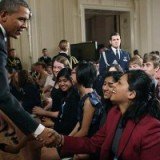Capitalism Without Capital (2018) Book Summary and Insights
Book Title: Capitalism without Capital
Subtitle: The Rise of the Intangible Economy
Publication Date: 2018
Author Names: Jonathan Haskel & Stain Westlake
Book Summary
This book focuses on investment. It is an appraisal of intangible assets from multiple angles and gives a detailed description of the measurement of intangible investments. In this book, the authors make a straightforward explanation of the four S’s, which is useful in identifying and defining the economic characteristics of intangibles. Capitalism without Capital makes a connection between intangibles and inequality, infrastructure, business finance, and management and makes a contrast on its organizational structure for companies. It also covers the challenges faced by government policymakers in an intangible economy and makes policy recommendations. To find out more, please read the following insights.
Who Is This Book For?
This book is for those looking to exploit the characteristics of the recent intangibles to make investments, grow their businesses. It is for managers, investors, and economists.
About The Authors
Jonathan Haskel is professor of economics at Imperial College Business School.
Stian Westlake is a senior fellow at Nesta, the UK’s national foundation for innovation.
Haskel and Westlake are co-winners of the 2017 Indigo Prize.
Buy Book: Support The Book Authors And Our Work
Great books should be read, studied, and reviewed frequently, so reading the actual book may provide more value to you than the book insights on this page. Besides, this would support the work of the book authors and what we do on LarnEdu. What could be better?
Important Notes
We get a small compensation from Amazon when you visit your nearest/local Amazon site via our affiliate link to purchase an item within 24 hours or if you add it to your cart and checkout within 90 days. This is no additional cost to you and supports our work.
The information on this page is meant to supplement the actual book(it is not a book review but distils the key insights or ideas from the book in under 5000 words). The content creator or LarnEdu does not necessarily support the views, thoughts, and opinions expressed in the text/book. Reasonable skepticism should be applied with any views, thoughts or opinions expressed/shared by the book author or content creator.
Reading the contents of this page does not guarantee specific results. The best lessons are achieved from taking consistent action in the real world rather than being addicted to the illusion of progress by getting stuck on reading an infinite amount of books or book summaries and insights. LarnEdu and the content creator accepts no responsibility or liability for the accuracy of the information on this page or how it is used.
Book Insights

Change in Investment
The nature of investment has been changing. The change however gradual has been significant. The investment that has risen without a doubt is an intangible investment. This intangible involves investment in ideas, knowledge, aesthetic content, software, brands, networks and relationships. In the past years, intangible investment was nothing more than just a mere sideshow, but in recent times there has been a shift and a steady increase in intangibles. When we look at the data for the economy as a whole, it makes the change in intangible investments clear. The authors show the importance of an intangible economy with instances of a gym and supermarket retail in the early years and its improvement. As the rise in intangible investment began, the tangibles began to grow slower and decreased sometimes. Technology, cost, productivity and industrial structure has been a contributing factor to the change in tangible and intangible investments. Not just these, globalization and the growing market sizes are also a determinant.
Measure of Intangible Investment
To understand how the measurement of intangible investment came about, we need to consider the concept of Gross Domestic Product (GDP) and systems of national accounts. Because of the challenges faced with, economists had to develop a way of measuring some intangible investments and incorporating them into national accounts. The first attempt at measuring intangible investment was because of the production of computer price indexes in the United States. The authors divided intangible investment into three broad types to aid the measure; computerized information, innovative property, and economic competencies. And each of these produces different kind of capital asset. It requires several steps in the measurement of investment. A detailed look has to be made on a firms spending, realizing that not all the sending will create an asset and then making adjustments in investments as inflation and quality change. Despite the measurement, the authors mentioned certain possible objections and raised questions in treating intangibles as investments.
Scalability of Intangible Investment
Unlike tangible assets, the use of intangibles occurs over and over again in multiple places at the same time. An instance is the operating manual for Starbucks, once written in Chinese they can use it in each of the country’s stores. Scalability also affects investment in knowledge. Scalability applies to many sorts of intangible assets. However infinite scalability rarely applies to real life intangibles. Irrespective of that, the authors expect intangible assets to be on average significantly more scalable than tangible ones. These intangibles are also cost efficient compared to most tangible assets. The authors expect that in a highly scalable economy, some very intangible-intensive businesses will get large, it will encourage more firms to try their hands on the market, and those businesses intending to compete with owners of scalable assets will face a major challenge.
Sunk Costs in Intangible Investments.
When a business makes an intangible investment and later makes a decision to back out, trying to reverse the decision and get back the investment cost by selling the assets will prove harder than in a case of tangible assets. These irrecoverably proven costs are what economists’ term as sunk costs. The phenomena of mass production, standardization and the unlikely ability to link tangible assets to the firms or business that owns them makes them easier to sell and less likely to be sunk investments. With the inclusion of debt, investments with irrecoverable costs prove difficult to finance. Hence why banks love mortgage lending since they secure their loans on a valuable, immobile asset that they can easily seize and sell should the borrower default. Assigning a market value to intangible assets which are often times context-specific is often very hard. This difficulty in creating markets for such assets is brought on by sunkenness. This sunkenness makes a contributing factor to the uncertainty of intangible assets and may have an effect on the way businesses behave.
Spillovers Generated by Intangibles
That some investments have unusually high spillovers makes it relatively easy for other businesses to take advantage of the intangible investments that they do not make themselves. It could simply be a case of copying ideas. We see spillovers not just in imitating ideas or marketing but in organizational design, training, and branding. Tangible assets also have spillovers. In looking at imitation and marketing spillovers the authors made an instance using Apple and the iPhone. The authors in this book, Capitalism without capital state that the difference in the spillovers of tangible and intangible investment is made worse by history. They also stated that in situations where companies cannot be sure of obtaining the benefits of their investments, it bounds them in making lesser investments. Asides that, the fact that those businesses who are capable of making most out of their intangible investments or exploiting others spillovers, are bound to do particularly well is one reason spillovers matter. Spillovers also affect the geography of modern economics and the behavior of individual companies as the businesses strive to maximize the value of the intangible investments they make. Regulatory frameworks need to be put in place to ensure businesses do not abuse spillovers.
Synergies in Intangible Investment
The fusion of ideas, especially in the field of technology is good and sufficient for advancement. Take the instance of the microwave oven as illustrated by the authors, the fusing together of different ideas eventually created a defining modern life innovation. This fusion is what is known as synergies. The combination of one idea with another which eventually results in an entirely new invention or a better improvement to an already existing invention. Synergies are not just shown in tangible assets but in intangible investments as well. These synergies in intangibles are particularly in information technologies. The synergies between Information Technologies (information and networking) and Intangibles work on a couple of levels and to a great extent is investment in information and connections. Regardless of its relation to ideas or new structures, intangible investments seem to have synergies with one another. The existence of these synergies between ideas creates a tension with the spillovers the authors mentioned. If because of spillovers of intangible investments, it encourages companies to keep their investments, or to just share it in a self-interested way, that is an opposite effect of synergies in intangibles. These synergies between intangibles can act as a valuable competitive tactic for individual companies. Not just in creating an advantage over competitors, synergies also affect company dynamics.
Rise in Economic Inequality
The rise of modern technology, globalization and rise in the basic tendency for wealth to accumulate are the prominent explanations for rise in inequality according to economists. With improvements in technology, workers get replaced by new technologies and thereby bringing a fall in the demand for workers, and giving way for a fall in wages and rise in profit. The authors have also shown the inequality in trade. The economists expect that once there is an increase in the supply of something, all other things being equal, there will be a fall in the price. The more basic rise in inequality is the rise in the wealth inequality. The idea is that capital tends to accumulate unless some countervailing force prevents it. Housing also plays a role in wealth inequality. A look at property prices show that the kind of properties that have mostly risen derives to a great extent from intangibles. The creation of synergies and spillovers by intangibles cause an increase in the inequality between competing companies. This inequality leads to an increasing difference in employee pay. The rise of the intangible economy helps explain the long-term rise of inequality of wealth as well as the inequality of income.
Rise in Intangible Economy
When it comes to serving the needs of the real economy, particularly in providing businesses with the finance needed to invest, the financial market and system does a poor job. Assuming that intangible investments will become increasingly important for businesses, the required financial institutions and funding mechanisms required to support it needs to be put in place. Government funding can help reduce the challenges that businesses face when it comes to making investments. The authors’ mentions the governments need to finance some particular sort of training and education. Because of the shift in the economy to an economy based on knowledge and ideas, many arguments have been on changing the school system. The future of adult education needs to be considered. It provides people with option value. This reduces the challenge of trying to decide what skills will be available in the coming years. Not just that, it may also help mitigate some challenges of inequality, in cases of those with poor skills.
Public Policy and Investment
Underdevelopment might possibly be the greatest risk for the future of an intangible economy. The challenges on how to encourage effective urban development, and tackling introduction of research into new forms of collaboration and communication should be looked into. If the future government manages to clarify ownership rights over intangibles, facilitate the development of financial markets and other intangibles as basic as research, then successful intangible-rich economies will eventually undertake more public investments in intangibles. To enable the intangible economy to thrive, policymakers may need to encourage trust, strong institutions, amongst others.
Key Quotes
Here are some key quotes from the book:
“Now, most tangible investments are manufactured (think of the many factories around the world that churn out everything from vans to machine tools to silicon chips). There is certainly a lot of labor involved in tangible investments (laying cables, shop fitting, the whole construction industry), but manufacturing matters too. Intangible investments, on the other hand, depend much more on labor. Design involves paying designers. R&D involves paying scientists. Software involves paying developers. So over time, we would expect intangible investment spending to gradually rise relative to tangible as Baumol predicted. Some of that rise might be offset by the point, which we look at in detail below, that some intangibles costs are mostly ‘fixed’ or one-off, so this cannot be the whole story, but it is likely to be at least one element of it.” – Jonathan Haskel, Capitalism without Capital: The Rise of the Intangible Economy.
“The final way to respond to the difficulty of lending against intangibles is the most radical. It is for businesses to change their finance mix: specifically, to rely more on equity and less on debt. Should a business fail, equity owners have no recourse – they get nothing – so can afford to be relatively insouciant about the liquidation value of a business’s assets. This makes equity a better way of funding businesses with few tangible assets.” – Jonathan Haskel, Capitalism without Capital: The Rise of the Intangible Economy.
“What if, by contrast, you are more a user of intangible assets: say, the Amazon warehouse, using the knowledge of the routing algorithm, or Starbucks, using the franchise book? For these firms, the organization and so management would look different. You probably want to have more hierarchies and short-term targets, since you are less worried about information flows form below and more concerned about low performance and stopping influence activities.” – Jonathan Haskel, Capitalism without Capital: The Rise of the Intangible Economy.
Conclusion
This book makes a great overview of the extent of capitalism in recent times. There is an analysis made of the impact of intangible assets on capitalism.
Since You’re Here …
Great books should be read, studied, and reviewed frequently, so reading the actual book may provide more value to you than the book insights on this page. Besides, this would support the work of the book author and what we do on LarnEdu.
You can also support the work we do at LarnEdu work by making a one/off or monthly donation(via PayPal) for as little as £0.99 or sharing this content.
Do you have any feedback or suggestions? Use the comment section below or send us a message.















